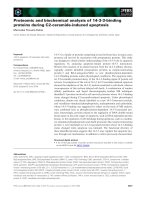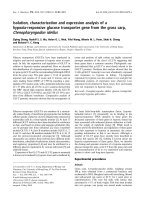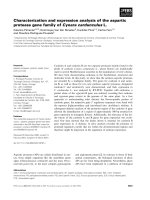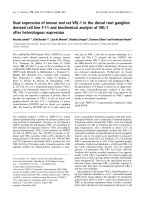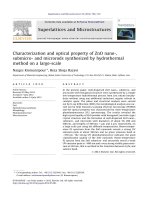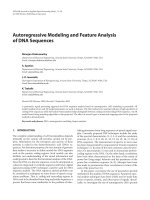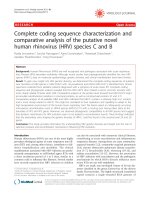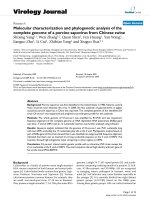Structural characterization and biochemical analysis of ID2, an inhibitor of DNA binding 5
Bạn đang xem bản rút gọn của tài liệu. Xem và tải ngay bản đầy đủ của tài liệu tại đây (5.72 MB, 1 trang )
!
42!
and single rod shaped crystals were obtained with 4.5M Ammonium Acetate (Qiagen
Cation Suite). However, during manual optimization, similar crystals were
reproducible only in 3M Ammonium Acetate (Figure 11B) at 18°C.
N-HLH82-L, the protein containing the full N-terminus of ID2 that also included
the C-terminal polypeptide was screened for crystals using the Innovadyne robot and
yielded many hits with Qiagen’s Cation Suite. The best condition, 0.1 M MES pH 6.5,
2.0 M Potassium Acetate, produced very similar single rod-shaped crystals as
HLH24-82-L-Se-Met at 18°C but were too small for diffraction studies. Hence, manual
hanging-drops were setup using identical screening conditions that produced crystals
that were large enough to cryo-loop for diffraction studies (Figure 11A).
Figure 11: Crystals from manual hanging-drop optimization grown at 18°C
(A) Crystals of N-HLH82-L in 0.1 M MES pH 6.5, 2.0 M Potassium Acetate
(B) Crystals of HLH24-82-L-Se-Met in 3 M Ammonium Acetate
3.5 Data Collection
Crystals from HLH24-82-L, HLH24-82-L-Se-Met and N-HLH82-L were tested for
diffraction under cryogenic conditions on a Proteum X8 X-ray source. All were
positive for diffraction and did not show signs of ice rings; likely due to the high salt
content of the mother liquor solutions. Hence, no additional cryo-protectant was


